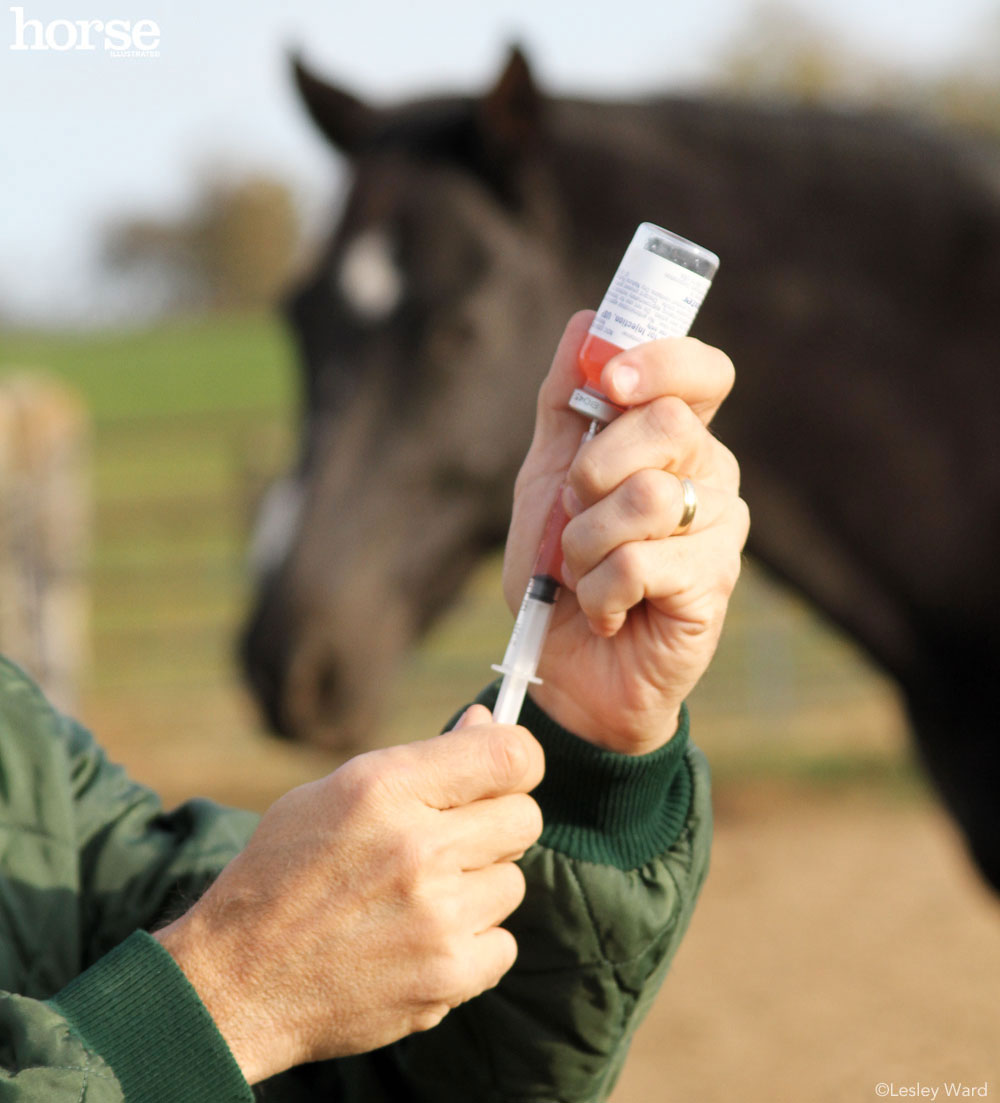
Occasionally, a horse may require medication that is not in oral form. If you are experienced and comfortable in the administration of subcutaneous (under the skin) or intramuscular (in the muscle) injections, your veterinarian may leave these for you to administer. If you opt to give them yourself, find out if it matters where on the horse’s body you give it, and if you should you switch locations after every administration to prevent soreness.
IV injections should only be given by veterinarians for a few safety reasons. First, the best location to administer an IV medication to a horse is the jugular vein along the neck. This large vein runs on top of the carotid artery, the major artery that brings blood directly to the brain. If an IV injection is not administered correctly, the medication can inadvertently be given in the artery instead. This is extremely serious, since at best, the horse will have an immediate reaction, typically in the form of a seizure, and at worst the horse could die, depending on the drug given. If a horse has a seizure, it is usually quick and violent, which also presents a huge danger to anyone standing nearby.
Secondly, some medications that have to be given in the vein are very caustic to the skin if any of the drug accidentally gets outside of the vein. One example of such a drug is the injectable form of bute. If IV bute accidentally gets outside of the vein during injection (e.g. if the needle comes out of the vein), it can cause serious damage to the skin, sometimes causing the skin to slough off. For this reason, IV bute should never be given as an intramuscular injection.
It is very important to leave IV injections to your veterinarian. This is for both your safety and the safety of your horse.
As you talk to your veterinarian about giving injectable drugs, make sure you understand dosing, just as you would with an oral medication. Also discuss with your veterinarian about proper injection technique and make sure you have a safe container to dispose of used needles.
Some injectable medicines require special handling. For example, penicillin needs to be refrigerated and shaken before use. Get clear instructions for care and storage of any medication, injectable or otherwise.
ANNA O’BRIEN, DVM, is a large-animal ambulatory veterinarian in central Maryland. Her practice tackles anything equine in nature, from Miniature Horses to zebras at the local zoo, with a few cows, goats, sheep, pigs, llamas, and alpacas thrown in for good measure.
This article originally appeared in the January 2015 issue of Horse Illustrated magazine. Click here to subscribe!





